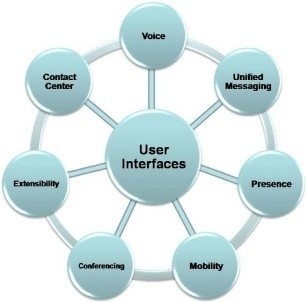Unified Messaging Study
 Introduction
Introduction
With technology advancing so quickly, companies have to adapt to the newest gadgets in order to stay on top of their industry. Although technology is a key component to doing business, nothing becomes more important than good communication. Being able to keep a solid foundation of a relationship with your customers is something technology can't necessarily provide. However, what it can provide is voicemails, faxes, and emails as a source of communication. As stated in the article Unified Messaging and Communications: Staying Ahead of the Curve, "Adding the options of fax and email to voice messaging has made communication easier - and ironically much more difficult - since an increasing number of messages are being left in so many different places." Having to check your voicemails through your telephone, faxes at the fax machine, and inboxes for emails messages really does waste time. The solution to this is simple, Unified Communications. It allows you to manage your voicemails, faxes, emails, calendars, and contact lists all in a single interface which will keep you on top of your priorities. The ability to check all your messages will not only save you time, but will assist in organizing all your messages in a single place. Messaging is a vital element of business relationships. Any lost message can mean a lost customer and lost business. It can take months to find a customer, but seconds to lose one. The last thing you want to do is lose a customer because your business does not possess the most current communication tools and the ability to communicate punctually.
Why use Unified Messaging?
Intel conducted an 18 month private study to see why people would want to use Unified Communications. In the study the main objectives were to research unified messaging options, study the industry, and implement a usage trial to establish viability and assess user reaction. The study concluded that "when companies adopt unified messaging, costs decline and productivity grows." In addition to that, "Eighty-Six percent of trial participants at Intel responded to the post-trial survey, praising the saved time, increased message responsiveness, enhanced mobility, and improved communication that unified messaging provided." Intel also noted that "98% of the users surveyed said that they preferred their PC email application as their messaging interface rather than a telephone or PDA." However, the study did indicate that many users were not often on the road, so they did not require mobility. With the growing need of mobility applications, an advantage to unified communications is that technology is adapting to trends in the mobile market and coming out with applications like TTS (Text to Speech). Text to speech is a computer's ability to read fax messages, emails, and web based text out loud to listeners who may be driving or not able to view the message itself. Even in the most difficult situations you are able to receive messages if needed. Furthermore, the study established that 68% or respondents note improvements in their organization and responsiveness with messages due to unified communications. When it comes down to it, users enjoy the ability to check there messages at any given time, all in one place.
Overall
"Authors felt that even by conservative estimates, the time savings of unified messaging would quickly show a positive ROI. Industry studies reveal unified messaging time savings of at least one and half hours a week per employee; the Intel study showed employee time savings ranging from 30 minutes to over two hours per week." The bottom line is that employees waste time having to go to multiple applications or locations to get their messages. It may not seem like a lot of time in the short run, but when you are talking over a time span of a normal two week pay period, you are paying people for around 80 hours, 4 of those possibly just from gathering their messages. It adds up quick. Time is money.
Resources:
"Unified Messaging and Communications: Staying Ahead of the Curve." (April 2004): 19.


